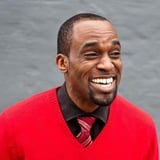Summary
Tamara from Longmont, Colorado, shares her story about the intersection of bodily modifications, identity, and cultural expectations in professional environments. As a researcher accustomed to adapting her appearance for different cultural contexts—from wearing a headscarf in East London mosques to adopting a Peruvian accent in Peru—she discusses an incident in Tokyo where she removed her piercings to fit Japanese business norms. She contrasts this with her California casual tech background where piercings were embraced. Despite her sacrifices, she encounters a product manager wearing a nose stud, which prompts her to question authenticity and cultural expectations. With insights from her interpreter, she learns the customer perceives her as the serious business leader, regardless of her piercings. Tamara reflects on how these adaptations are acts of respect, survival, and agency, especially for marginalized groups, and how they lead to continual self-reinvention and humility in navigating identity across cultures.
Key Insights
-
•
Bodily modifications are often strategic adaptations to bridge cultural and professional divides.
-
•
Researchers frequently change their appearance and behavior to gain access and respect in varied cultural contexts.
-
•
Identity is fluid and shaped by context rather than fixed or purely authentic.
-
•
Marginalized groups often modify their bodies and practices for protection and to navigate exclusionary spaces.
-
•
Corporate norms vary widely, as seen between conservative financial firms and casual tech environments.
-
•
Visual markers like piercings can be interpreted differently depending on cultural perspectives and customer perceptions.
-
•
External interpretations of professionalism can undermine personal self-image and agency.
-
•
Adaptations to bodily presentation are not necessarily betrayals of self but acts of respect and survival.
-
•
Collaborating with cultural insiders (e.g., interpreters) provides crucial nuanced understanding in cross-cultural work.
-
•
Continuous bodily and identity adaptations contribute to discovering new versions of oneself over time.
Notable Quotes
"I’ve done the headscarf when recruiting door to door at the mosques of East London."
"I traded my butch boots for kitten heels when interviewing scientists who adhere to biblical beliefs of creationism."
"I’ve literally relearned how to walk."
"It’s probably a good idea to remove the piercings my interpreter confirmed."
"To some people, acts of bodily modification may seem inauthentic, maybe even a betrayal of my unique self."
"Women, people of color, LGBTQ folks, and other minorities are deeply familiar with having to modify bodies and bodily practices as steps for protection and self preservation."
"My heart sank. What the F? Clearly this guy didn’t understand."
"What was important was that in the eyes of the customer, I conveyed the part authentically."
"Whatever image I had attempted to create was always subject to interpretations that I could not control."
"I have learned not to hold on too tightly to the ideas I’ve constructed about myself."
Or choose a question:
















More Videos

"We made this move in January 2020 — our research and insights team moved out of UX but stayed within product organizations."
Nalini KotamrajuResearch After UX
March 25, 2024

"Constraints can channel focus, but being stuck in them limits potential."
Dean BroadleyNot Black Enough to be White
January 8, 2024

"We’re not going for perfection. We’re going for excellence and change."
Denise Jacobs Nancy Douyon Renee Reid Lisa WelchmanInteractive Keynote: Social Change by Design
January 8, 2024

"If you don’t have the support you need—budget, time, people—your program is at high risk of failure."
Kim Fellman CohenMeasuring the Designer Experience
October 23, 2019

"Not every project needs to be responded to; not every RFP needs a proposal."
George AyeThat Quiet Little Voice: When Design and Ethics Collide
November 16, 2022

"I don't want a component library for the account home. I want a system for all of that."
Nathan CurtisBeyond the Toolkit: Spreading a System Across People & Products
June 9, 2016

"We want our culture to be about the outcome, not about who owns what or who’s doing what on a piece of work."
Greg PetroffThe Compass Mission
March 10, 2021

"Diverse research teams blend outsider and insider perspectives for authentic cultural translation."
Chloe Amos-EdkinsA Cultural Approach: Research in the Context of Glocalisation
March 27, 2023

"Having the qualitative and quantitative data together lets us tell a comprehensive story to stakeholders."
Mackenzie Cockram Sara Branco Cunha Ian FranklinIntegrating Qualitative and Quantitative Research from Discovery to Live
December 16, 2022
















